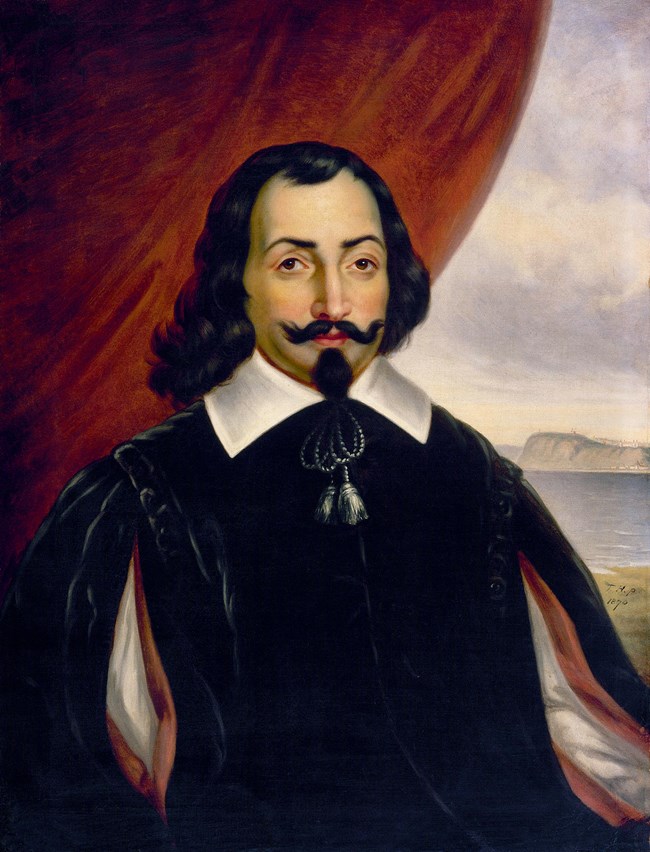
Courtesy National Park Service/Acadia National Park
New FranceThe first meeting between the people of Pemetic and the Europeans is unknown, but a Frenchman, Samuel de Champlain, made the first important contribution to the historical record of Mount Desert Island. He led the expedition that landed on Mount Desert on September 5, 1604, and wrote in his journal, "The mountain summits are all bare and rocky..... I name it Isles des Monts Déserts." Champlain's visit to the island 16 years before the Pilgrims landed at Plymouth Rock destined this land to become known as New France before it became New England. In 1613, French Jesuits, welcomed by native people, established the first French mission in America on Mount Desert Island. They had just begun to build a fort, plant corn, and baptize the natives when an English ship commanded by Captain Samuel Argall destroyed their mission. The English victory doomed Jesuit ambitions on Mount Desert Island, leaving the land in a state of limbo lying between the French, firmly entrenched to the north, and the British, whose settlements in Massachusetts and southward were becoming increasingly numerous. No one wished to settle in this contested territory. For the next 150 years, the island's importance was primarily its use as a landmark for seamen. There was a brief period when it seemed Mount Desert would again become a center of French activity. In 1688, Antoine Laumet, an ambitious young man who had immigrated to New France and bestowed upon himself the title Sieur de la Mothe Cadillac, asked for and received a hundred-thousand acres of land along the Maine coast, including all of Mount Desert Island. Cadillac's hopes of establishing a feudal estate in the New World, however, were short lived. Although he and his bride resided here for a time, they soon abandoned their enterprise. Cadillac later gained lasting recognition as the founder of Detroit. New EnglandIn 1759, after a century and a half of conflict, British troops triumphed at Quebec, ending French dominion in Acadia. With Native Americans scattered and the fleur-de-lis banished, lands along the Maine coast opened for English settlement. Governor Francis Bernard of Massachusetts obtained a royal land grant on Mount Desert Island. In 1760, Bernard attempted to secure his claim by offering free land to settlers. Abraham Somes and James Richardson accepted the offer and settled their families at what is now Somesville. The onset of the Revolutionary War ended Bernard's plans for Mount Desert Island. In the aftermath of the war, Bernard lost his claim, and the newly created United States of America granted the western half of Mount Desert Island to John Bernard, son of the governor, and the eastern half of the island to Marie Therese de Gregoire, granddaughter of Cadillac. Bernard and de Gregoire soon sold their landholdings to nonresident landlords.
|
Last updated: September 12, 2025

